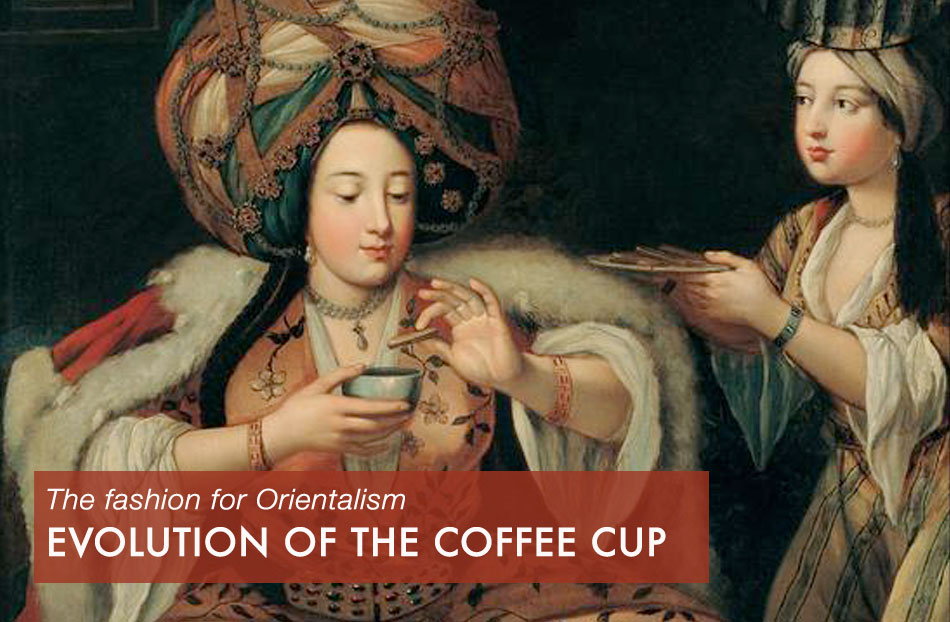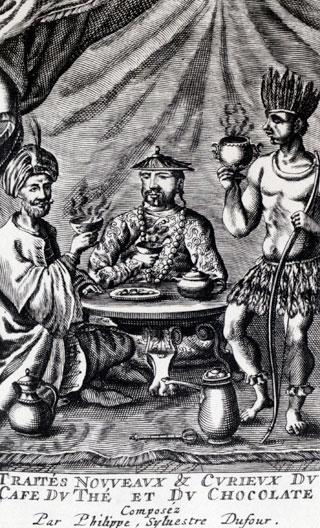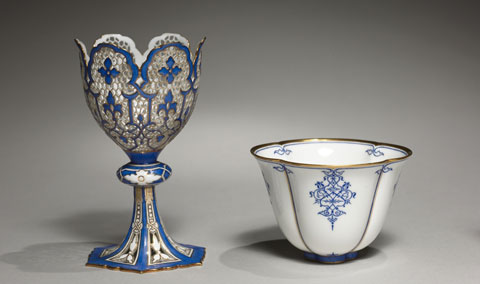

Philippe Sylvestre Dufour, Traités Nouveaux & Curieux Du Cafè, Du Thé, et Du Chocolate, The Hague, 1671, frontispiece
Sèvres factory, Cup holder and cup (zarf), c. 1848–1855. Cleveland, Museum of Art
Top: French school, Savouring coffee, first half of the 18th century, detail. Istanbul, Pera Museum
The Italian word for cup, tazza, derives from the Arabic tàssa indicating a small glass probably first noticed by westerners during the crusades.
It was in the early 18th century, with the establishment of the consumption of "exotic" drinks (coffee, tea, chocolate) and the taste for sophisticated table objects, that the cup as we know it today was born: a receptacle with a looped handle, usually placed on a saucer with the same decoration.
The various coffee-drinking models also included a handleless thick ceramic receptacle in the shape of a flute, known as a mazagran after the Algerian city where, in 1840, the French army withstood the attack thanks to supplies of cold coffee and alcohol. Also in the mid-19th century, when the fashion for Orientalism imposed itself in numerous artistic forms, the most sophisticated cup was the zarf: with no handle, it had a rounded bottom and was set upon a separate support in the shape of a small egg cup, and was used to drink a small quantity of Turkish coffee.

